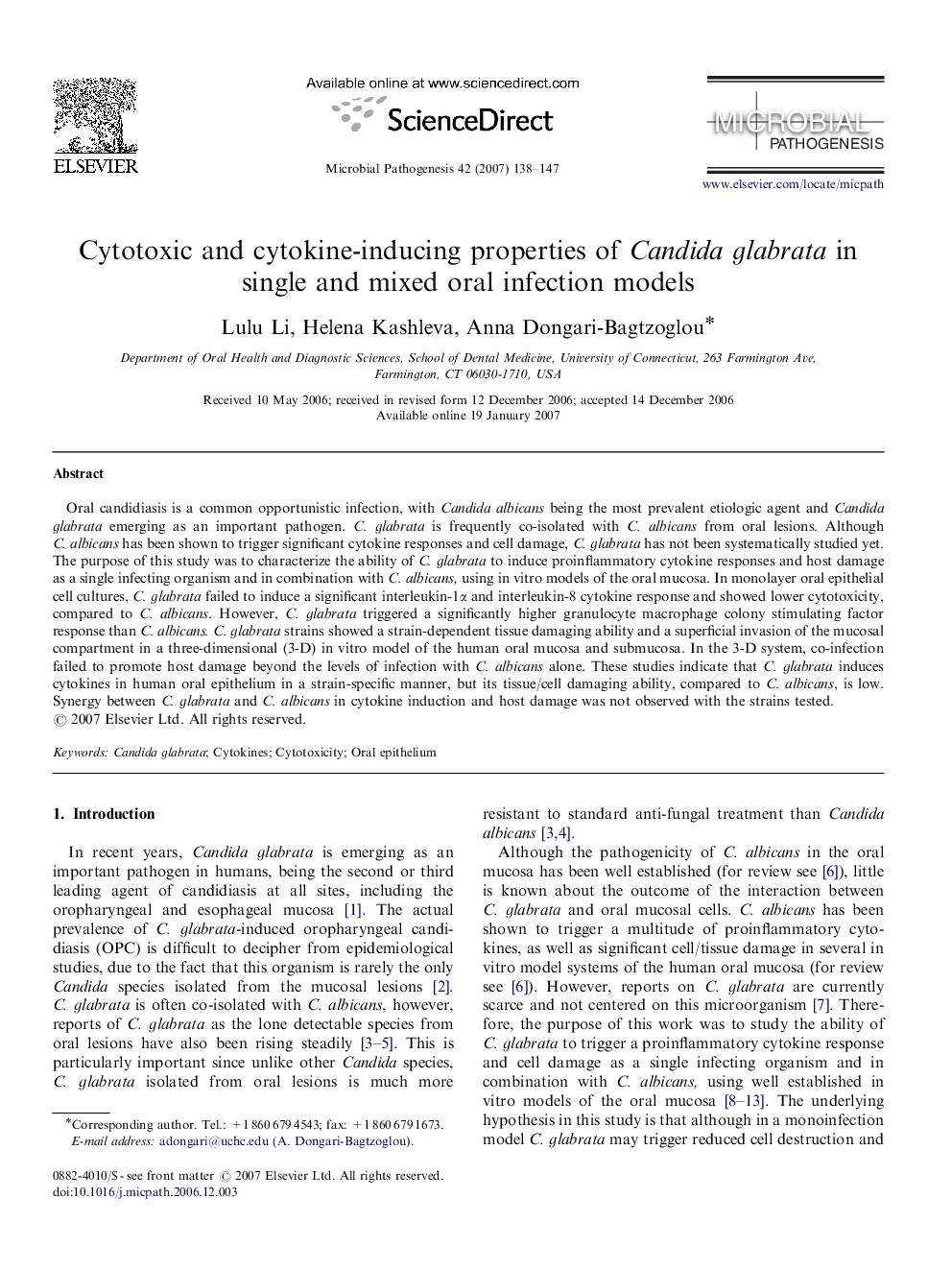| Article ID | Journal | Published Year | Pages | File Type |
|---|---|---|---|---|
| 3417177 | Microbial Pathogenesis | 2007 | 10 Pages |
Abstract
Oral candidiasis is a common opportunistic infection, with Candida albicans being the most prevalent etiologic agent and Candida glabrata emerging as an important pathogen. C. glabrata is frequently co-isolated with C. albicans from oral lesions. Although C. albicans has been shown to trigger significant cytokine responses and cell damage, C. glabrata has not been systematically studied yet. The purpose of this study was to characterize the ability of C. glabrata to induce proinflammatory cytokine responses and host damage as a single infecting organism and in combination with C. albicans, using in vitro models of the oral mucosa. In monolayer oral epithelial cell cultures, C. glabrata failed to induce a significant interleukin-1α and interleukin-8 cytokine response and showed lower cytotoxicity, compared to C. albicans. However, C. glabrata triggered a significantly higher granulocyte macrophage colony stimulating factor response than C. albicans. C. glabrata strains showed a strain-dependent tissue damaging ability and a superficial invasion of the mucosal compartment in a three-dimensional (3-D) in vitro model of the human oral mucosa and submucosa. In the 3-D system, co-infection failed to promote host damage beyond the levels of infection with C. albicans alone. These studies indicate that C. glabrata induces cytokines in human oral epithelium in a strain-specific manner, but its tissue/cell damaging ability, compared to C. albicans, is low. Synergy between C. glabrata and C. albicans in cytokine induction and host damage was not observed with the strains tested.
Related Topics
Life Sciences
Immunology and Microbiology
Microbiology
Authors
Lulu Li, Helena Kashleva, Anna Dongari-Bagtzoglou,
